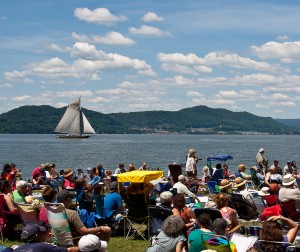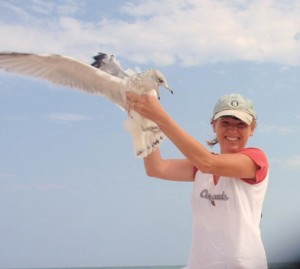When I was young, I was always quite un-intrigued by the “life” around me. As I grew older, living in North Bellmore, a town characterized by small shopping strips and cul-de-sacs started to please me less and less. There was not much real nature to be seen. The only green that my family owned was a small front lawn. It wasn’t that I hated it, it was simply that I felt like I was missing something.
To compensate, I often found comfort in going to local preserves, my favorite being the Roosevelt Preserve, located on the border of Merrick and Roosevelt. I found it to be awe-inspiring. Trails taking twists and turns, forged by following natural openings visible amidst a sea of green. I took solace in being led to nothing but a tree or stream, where not a thing was spelled out for me, where opportunities to think or run free were as abundant as the vast natural scenery around me. It was where I could be myself and more importantly where I could find myself. It was blissful solitude in nature.
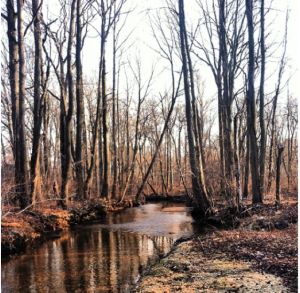
The Meadow Brook Stream and trees, Roosevelt Preserve.
For years I did not think the experiences I had in the various preserves across Long Island could be replicated anywhere other than in another place of nature. However, my experience with the Stony Brook University Sustainability Studies Program has proved that thought to be incorrect.
Acting just like a preserve or park, the program inspires thought not through a body of water or an open field, but through well selected readings via authors such as Emerson, Thoreau, Muir, Carson and many more. Classes within the program vary not only in their academic nature, but also in what aspects of “nature” they teach you about: how to protect it, why you should protect it, its history and even the scientific breakdown of the various organisms within it.
Think of any place where you can go and be truly happy. Now imagine millions had shared in enjoying the very same thing. Now imagine every documented thought or idea related to that place organized and presented to you. If it was really so meaningful to you, wouldn’t you take the time to learn all you could about it? This is what the program offers. It presents you with a plethora of courses covering all aspects of Sustainability Studies; a rare opportunity in today’s automated world; an opportunity I have long dreamed of having.
Walking through the Roosevelt Preserve I can think of dozens of instances where I just looked up at the trees and thought to myself, “I would really do anything to protect this.” As I walked alone in the woods thinking my deep thoughts, I probably thought that sounded pretty cool. But now that I think about it, it doesn’t. Take a walk, think some thoughts…that’s nice. But what has it done for you? What has it done for the world?
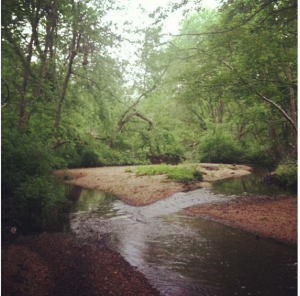
Roosevelt Preserve in springtime.
Every day I spend as a student in the Sustainability Studies Program, I gain knowledge that allows me to be like a young tree taking in water and expanding its roots to stand firmer against the forces of the world. I’m learning that aside from being a form of life myself, there are things I can do to breathe life into the world. I’m learning about jobs I could do to help form a sustainable world. I’m entering into the realm of internships and volunteering and I’m not doing it alone. The program is constantly sending emails about various opportunities through internships, volunteer experience, scholarships, even knowledge via studying abroad trips.
The Sustainability Studies Program has formally introduced me to a world that for years I merely played with. I spent my adolescent years just wanting to escape from my mundane suburban surroundings and get to the nearest nature preserve. Now every step I take in my life is more meaningful, helping me create real positive change in the world. I now see that what is really behind that stream or tree that those initial abstract trails had led me to. That’s not pretty—but—really cool.
That’s the Sustainability Studies Program, and I’m glad to be a part of it.
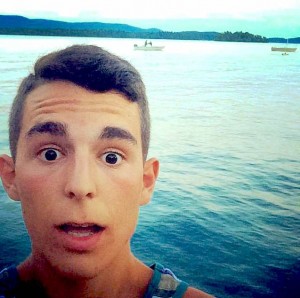
Chad Marvin, in Lake George, New York (Summer 2014).
By: Chad Marvin







